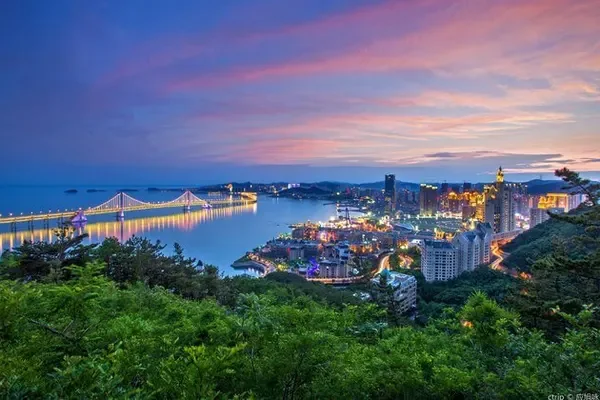introduce
Dule Temple is located in Yuyang Ancient Street, Jixian County, Tianjin City. It was first built in the Sui Dynasty and rebuilt in the Liao Dynasty. It is one of the only three remaining Liao Dynasty temples in my country. The Shanmen, the Guanyin Pavilion and the statues in the two buildings are all historical relics of the Liao Dynasty, with a history of more than 1,000 years. Other buildings were built after the Ming Dynasty, and there are many monuments to visit inside. Dule Temple is not big, the main buildings are all on the central axis, and you can visit the buildings one by one along the central axis. In the Tang Dynasty, it was under the jurisdiction of the Central Plains. In the Liao Dynasty, it was a remote area. Although the architectural style of the Central Plains has changed, it still follows the architectural style of the Tang Dynasty. In comparison, it is very special. One of the architectural features of the Tang Dynasty is that it has a large roof. The temple gate that tourists see at first sight has a very large eaves. It is the earliest existing temple gate in my country. The tail of the owl-kissed dragon on the roof is turned inward, which is different from the tail of the owl-kissed dragon on the temples of the Ming and Qing Dynasties, which is an earlier object of the owl-tail. The three-character plaque of "Dule Temple" hanging on the door is said to have been written by Yan Song, a treacherous minister of the Ming Dynasty. On both sides of the mountain gate, the colored sculptures of the "two generals Hum and Ha" of the Liao Dynasty, as well as the murals of the Qing Dynasty are very exquisite. Walking through the mountain gate is the Guanyin Pavilion, the main building of Dule Temple. It is all wooden structure without using a single nail. It is the earliest existing wooden structure pavilion in our country. Look up and pay attention to the bottom of the eaves. Mortise and tenon structure of wood interlocking. The four-character plaque of "Guanyin Pavilion" hanging on the door of Guanyin Pavilion is said to have been written by Tang Dynasty poet Li Bai. The attic looks like two floors from the outside, but there are actually three floors inside, with a dark floor sandwiched between the upper and lower floors. Inside the Avalokitesvara Pavilion is the "treasure of the town temple" - the largest colored clay statue of Avalokitesvara in my country. The head of this 16.27-meter-high Avalokitesvara statue passes through the three-story pavilion to the top of the building, and 10 small heads are molded on the top of the head. It is "Eleven-faced Avalokitesvara". It's a pity that due to the need of cultural relics protection, you can't go to the Guanyin Pavilion. You can only stand on the first floor to admire the statue of Guanyin. In addition, the ancient Bodhisattva statues on both sides of the Avalokitesvara statue are in the same style as the paintings of ladies in the Tang Dynasty, and the exquisite Ming Dynasty murals on the surrounding walls are all worth seeing. Behind Guanyin Pavilion is an octagonal pavilion named Weituo Pavilion. Behind the Wei Tuo Pavilion is the Repaying Grace House. In the Maitreya Hall, the front hall of Baoenyuan, Maitreya and the statues of the four mad monks Hanshan, Puhua, Fengbo and Jigong are placed together. It is rare to have a layout like Dule Temple and worship Bodhisattvas. The back hall of Baoenyuan is the Buddha Hall of the Third Generation, and the east and west side halls are Manjusri Hall and Puxian Hall respectively. One of the buildings not on the central axis of Dule Temple is the Qianlong Palace in the east. It used to be the place where the emperors of the Qing Dynasty took a rest on the way to visit the Dongling Mausoleum. Now there are 28 Qianlong imperial pen inscriptions in it. The other is the exhibition hall in the northwest, which exhibits some ancient cultural relics of Jixian County, allowing tourists to learn more about the history of Jixian County and Dule Temple. There is also a White Pagoda Temple to the south of the Dule Temple. The White Pagoda in the temple is falling on the focus of the Avalokitesvara statue in the Dule Temple. The White Pagoda has a unique shape and is a "mash-up" of several architectural styles from China and India. The temple is only 300 meters away from Dule Temple, so you might as well walk there to have a look. Every Bodhisattva's birthday and anniversary, Dule Temple will hold a Dharma assembly. The annual Spring Festival is centered on Dule Temple, and temple fairs are held in several nearby streets. There will be performances such as lion dance, stilts, and acrobatics. And food stalls, very lively.
opening hours
May 1st - October 1st 08:00-17:00; October 2nd - April 30th of the following year 08:00-17:30 (ticket sales stop at 17:00)

